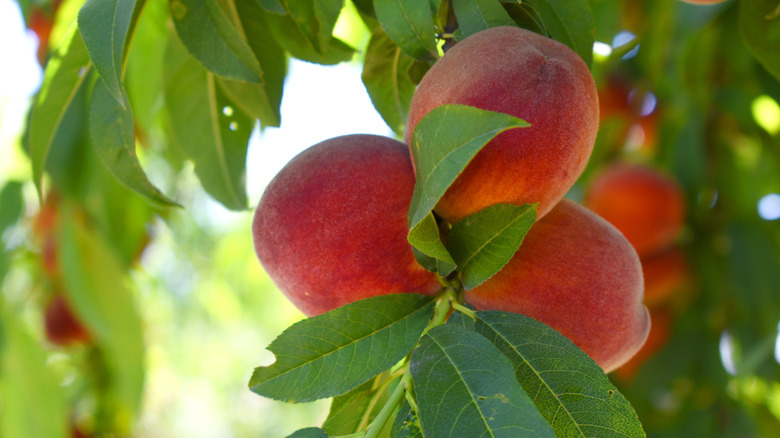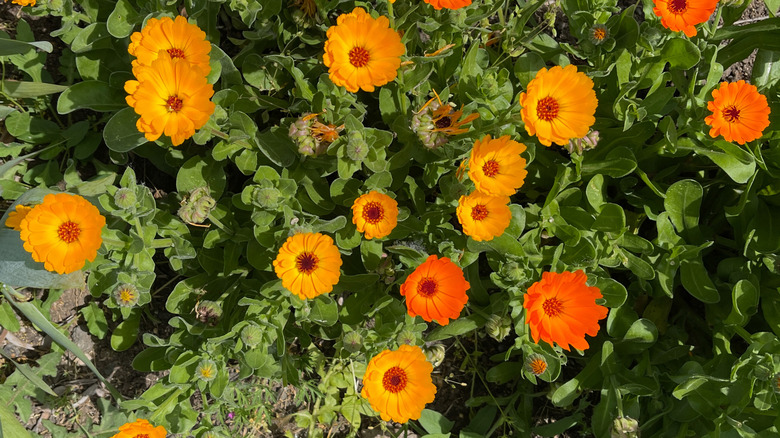The Low-Maintenance Flower That Helps Distract Common Pests From Your Peach Trees
Peach trees may be a popular addition to many backyard fruit gardeners, but they're also a magnet for aphids, thrips, and other sap-sucking insects. One smart, environmentally friendly way to reduce these pests without turning to harsh sprays is to try companion planting with calendula. Also known as pot marigold (Calendula officinalis), this cheerful annual does more than add a splash of color beneath your trees; it is also a powerful companion plant for your peach trees. Growing in USDA Hardiness Zones 2 through 11, calendula easily self-seeds and will provide years of helpful, beautiful blossoms.
Calendula blooms in vivid shades of yellow and orange from early summer through frost. It's easy to grow, and thrives in full sun with very little work. But its beauty is more than just its blossom color. The sticky resin on calendula stems and buds helps reduce the local pest population by acting as a 'trap crop,' and luring pests like aphids to itself instead of your peaches.
Even better, calendula's abundant nectar and pollen support a wide range of beneficial insects, including hoverflies, ladybugs, and parasitic wasps, which are all natural enemies of peach pests. Calendula flowers also attract bees and other pollinators to the garden. The bright orange self-seeding flowers also attract hummingbirds. Maintaining biodiversity and encouraging predatory insects is one of the most effective ways to manage pests in backyard orchards, and growing calendula under your peach trees is an important step.
Calendula improves soil while protecting your fruit trees
Calendula's pest-fighting abilities are just one of the ways it can help you grow peach trees from seed. This hardy bloom also benefits the soil beneath the trees. Acting as a living mulch, calendula helps shade the soil, keeping it cool and retaining moisture during hot spells. Its fibrous root system contributes to soil structure by creating air pockets, which improve drainage and make it easier for water and nutrients to reach the deeper roots of your fruit trees. Calendula performs well in a wide range of soils, making it ideal for filling gaps under fruit trees where grass struggles. As a low-profile plant, calendula also helps suppress weed growth and reduce erosion, especially on sloped terrain or in newly planted orchards.
You can grow calendula from transplants or seeds. To plant from seed, direct sow in the garden when soil temperatures reach 60 degrees. Plant the seeds 1/4 inch deep and lightly cover with soil. If growing transplants, be sure that your last frost date has passed before setting them in the ground. Calendula prefers well-drained soil but can survive in a wide range of soil types with little fuss. Once your plants germinate, keep the soil moist but do not overwater. Although calendula can survive in drought conditions, it can get root rot if overwatered or if the soil remains too wet. As the flowers bloom, deadheading is recommended for the most flowers, but it isn't necessary.Growing calendula as a companion plant for your peach trees just makes sense. It's good for the soil, good for protecting the peaches from insect damage, and great for biodiversity in your garden.

